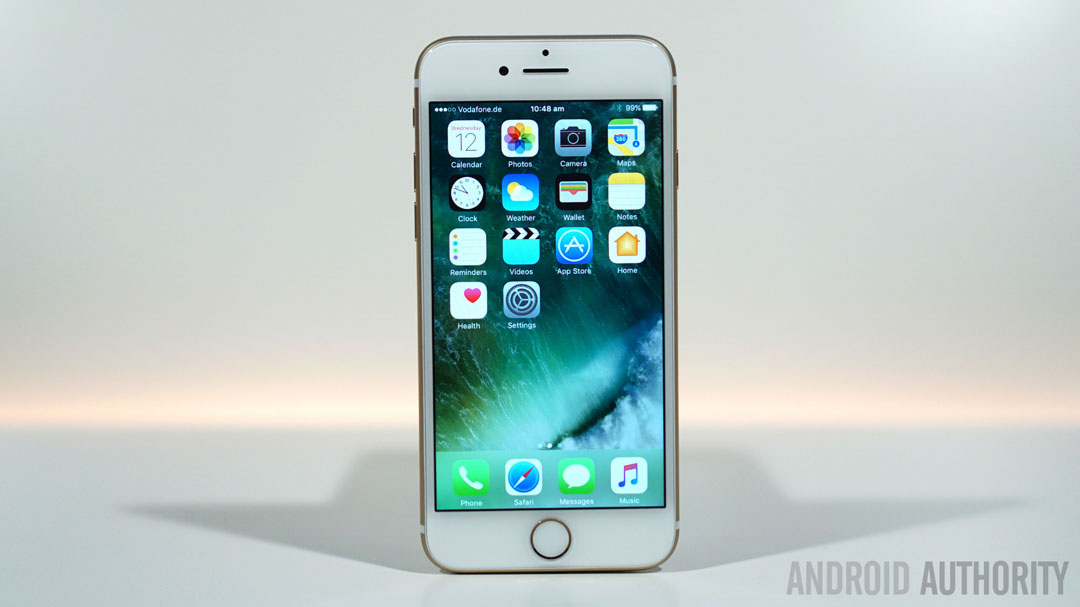Affiliate links on Android Authority may earn us a commission. Learn more.
Why Apple's A10 chip “blows away the competition”

Credit where credit is due: Apple’s A-series chipsets are pretty impressive. Despite only recently stepping up to the quad-core table, Apple’s processors have traditionally stood their ground very well against the likes of hexa-core and octa-core SoCs from the likes of Qualcomm, Samsung and MediaTek. So how does Apple do it?
The Linley Group set out to find out just that. The chip research group tasked teardown experts Chipworks with disassembling the A10 Fusion chip and explaining the secret sauce that makes Apple processors so formidable.
The iPhone 7 delivers better performance than even some low-end PCs.
According to Linley Gwennap, the director of The Linley Group, “Apple’s investment in custom CPU design continues to pay off, as the new iPhone 7 delivers better performance than any other flagship smartphone and outscores even some low-end PCs.”
According to Gwennap’s research, the Apple A10 used in the iPhone 7 is notably faster than the Samsung Exynos 8890, the Qualcomm Snapdragon 820 and the HUAWEI Kirin 955.
The A10 delivers “nearly identical performance” to Intel’s Skylake processors.
Furthermore, Gwennap notes, “Apple’s new CPU actually compares better against Intel’s mainstream x86 cores,” claiming that the A10 delivers “nearly identical performance” to Intel’s Skylake processors, primarily due to its high performance Hurricane architecture.
Gwennap even forecasts an ominous future for Intel: “Apple’s CPU prowess is beginning to rival Intel’s. In fact, the new Hurricane could easily support products such as the MacBook Air that today use lower-speed Intel chips.”
The A10’s Hurricane cores do all the heavy lifting while the Zephyr (which translates to “light breeze”) cores perform energy efficient tasks, following ARM’s big.LITTLE architecture. Hurricane reportedly delivers 35% better performance over the Twister cores found in the A9, “boosting both the clock speed and the per-clock performance”. Meanwhile, the Zephyr cores reduce battery consumption.
It might be easy to ignore all this as typical Apple-focused grandiloquence, but Gwennap has data to back up the claims. Chipworks pulled apart the A10 chip, exposing its dual Hurricane and dual Zephyr cores and found some interesting things that set the A10 apart from the competition.
The A10's Hurricane cores are about twice the size of other high-end mobile CPUs.
The biggest revelation was just how huge the Hurricane cores are. At 4.18 mm2 they’re “about twice the size of other high-end mobile CPUs”. Even the smaller Zephyr cores are much larger than their low-power counterparts – “nearly twice as large as Cortex-A53”. But does size really matter?
In this case, it does. According to Gwennap’s research, “die size is an important metric, since it drives both cost and power”. And herein lies the crux of the argument. Despite their gargantuan size, Apple cores are not necessarily more powerful than other chipsets per square meter. But Apple chips “make up for it in efficiency per clock cycle, thanks to a better “instruction per clock” rate”.
Apple’s advantage is its ability to spend money.
There’s a lot of technical stuff going on in the analysis I won’t bore you with, but Gwennap essentially boils it all down to something we all already know:
“Apple’s advantage is its ability to spend money. Die area is expensive for a processor built in leading-edge 16nm FinFET technology….Because Apple sells phones, not chips, adding a few dollars of die cost is of little importance if the resulting high performance enables it to sell more $600 products.”
Whether you believe throwing money at performance is the right move compared to keeping costs down and optimizing everything instead (remember, Apple chipsets don’t always have the best performance per square meter), Apple has at least demonstrated its approach makes a lot of money in the end.
Who do you think makes the best chipsets? Is speed or stability more important to you?